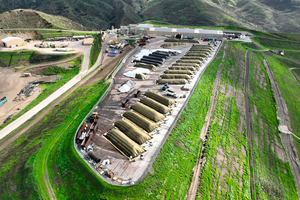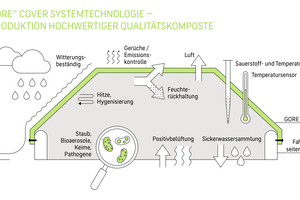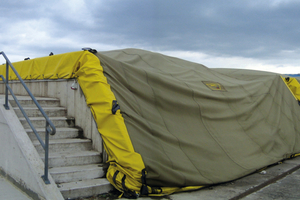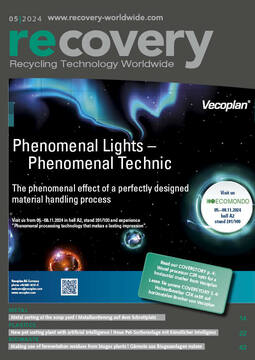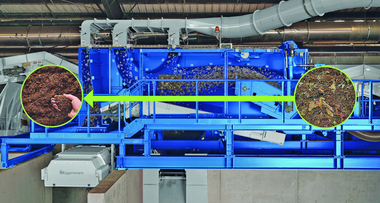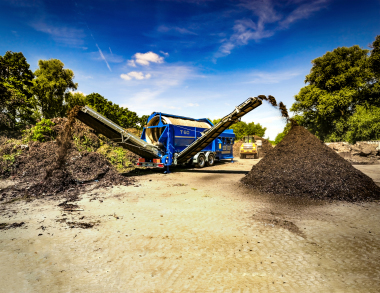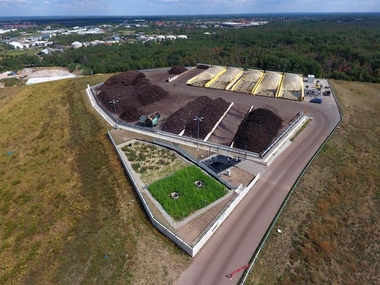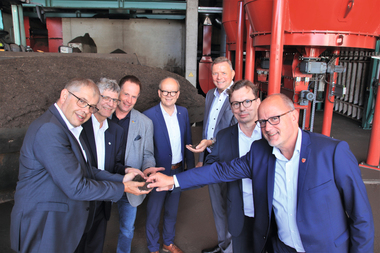Making sensible use of fermentation residues from biogas plants
Biogas is a success story: 9000 biogas plants in Germany currently cover around 4.5 % of the national electricity demand and make a significant contribution to the energy transition. Another benefit is that the fermentation residues produced – around 80 million t/a – can be processed into high-quality compost, which counteracts soil erosion and offers plant operators an additional source of income.
In Germany, around 20 % of agricultural land is affected by soil erosion. Erosion is accompanied by the loss of nutrients, humus and organic matter as well as problems such as salinization, acidification and pollution. Compost plays a decisive role in the regeneration of depleted soils. It improves the soil structure, increases the humus content and promotes biological activity in the soil. It also helps to improve carbon storage in the soil, which has a positive effect on the climate.
High-quality compost from
fermentation residues
High-quality compost is in high demand and is therefore scarce and expensive. What is a problem for buyers is an opportunity for producers: when refining fermentation residues from biogas plants into compost, the material use of the fermentation residues must be considered at an early stage in addition to the energy use. The fermentation processes are often too long, the organic material is mixed incorrectly, there is no homogeneous aerobization or the necessary process times are not adhered to. The technology used when planning the anaerobic digestion plant is therefore crucial. It should ensure the following:
Reliable hygienization of the digestate
Efficient treatment times
Maximum odor reduction
Space-optimized treatment areas
Low operating costs
Composting with semi-permeable membranes: proven and economical
A proven, ecologically and economically efficient solution for the treatment of fermentation residues is the use of plants with semi-permeable membranes. These are generally much more cost-effective than closed composting plants and offer specific advantages for fermentation plants: emissions of highly volatile, odorous organic substances (metabolites) and other pollutants can be sustainably controlled by specific membrane effects.
The GORE® Cover System is one of the pioneers in this field. Numerous digestate treatment plants have been in operation for many years. It essentially consists of three components: the membrane cover, an aeration system and an oxygen and temperature monitoring system that ensures sufficient oxygen supply and even temperature distribution.
The combination of these components creates ideal conditions and enables an economical and reliable composting process. The stable and therefore extremely durable laminate completely encloses the biowaste and thus physically seals it off from the outside – without the need for a building or biofilter system.
Protecting the compost from wind
and weather
Thanks to its membrane pore structure, the GORE® Cover laminate is waterproof and windproof, protecting the rotting material from wind and weather and thus from undesirable decomposition processes caused by wetting from the outside. Due to its water vapor and air permeability, it also regulates moisture transport and allows air to escape without the rotting material drying out. At the same time, the cover acts as a physical barrier against odorous substances and other climate-relevant VOCs. In addition to the treatment of fermentation residues, the composting technology is also suitable for various types of organic waste, such as green waste, kitchen waste and animal manure.
Hygienization through aerobization
Aeration channels in the floor ensure very good aerobization of the rotting material. The membrane plays a decisive role here by generating a certain overpressure. The amount of air blown in is distributed very homogeneously. All zones are reliably supplied with air. The necessary aeration is controlled via the oxygen measurement. Temperatures are measured at the same time. This is usually within the necessary hygienization temperature window after a short treatment time. Temperatures of over 70 °C can be achieved.
Small footprint and short treatment times for greater efficiency
One lever for cost-effectiveness lies in the dimensions of the system and the treatment time. The standard version of a rental system is 50 m long, 8 m wide and 3.50 m high – and therefore comparatively compact. The length of the rental systems can vary depending on the space available on site. With the same footprint, the treated rotting material usually has a significantly higher treatment volume than with open composting due to the built-in side walls. The initial moisture content can be around 35 % dry matter. For higher moisture contents, such as from wet fermentation, green waste can be added.
The treatment period for the main rotting process is usually a total of six weeks under membrane. During this time, it is turned once with the front loader (after three to four weeks) to mix again and increase porosity. Post-rotting then begins in order to achieve the desired compost quality. Rotting grade 5 is usually achieved after a further four to six weeks.
Conclusion
There is considerable economic and ecological potential in the fermentation residues from biogas plants. If the plant is designed correctly and composting is considered from the outset, biogas plants not only contribute to the energy transition, but also to sustainable agriculture through the production of valuable compost.
Authors:
Ulf Harig, Thomas Terpetschnig, W. L. Gore & Associates, Inc.

